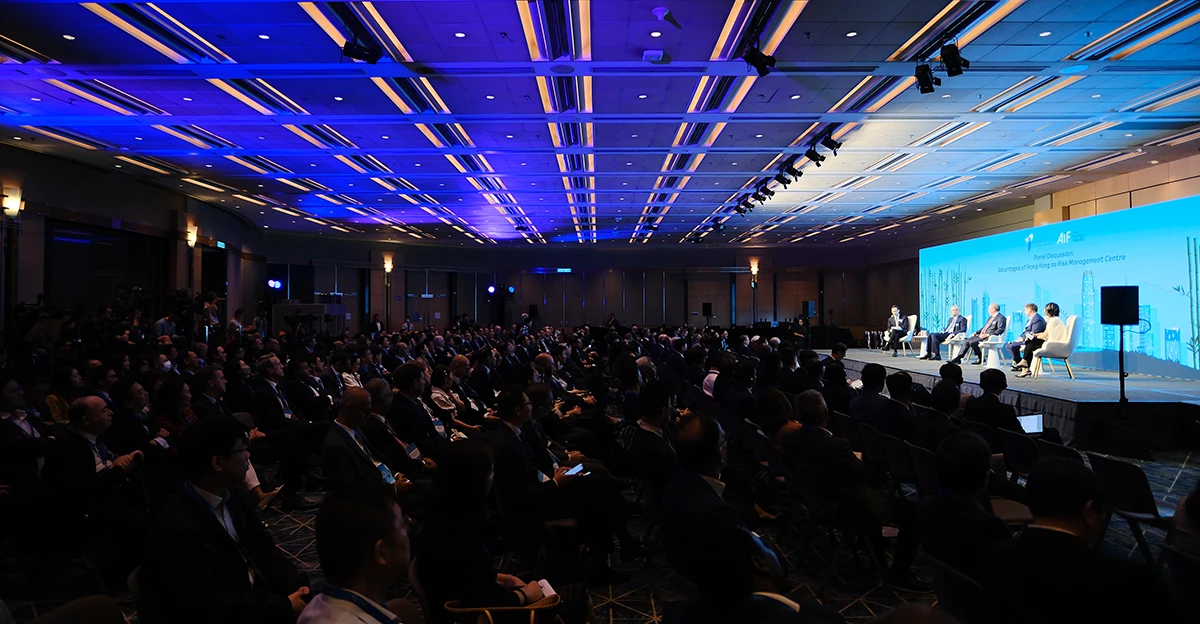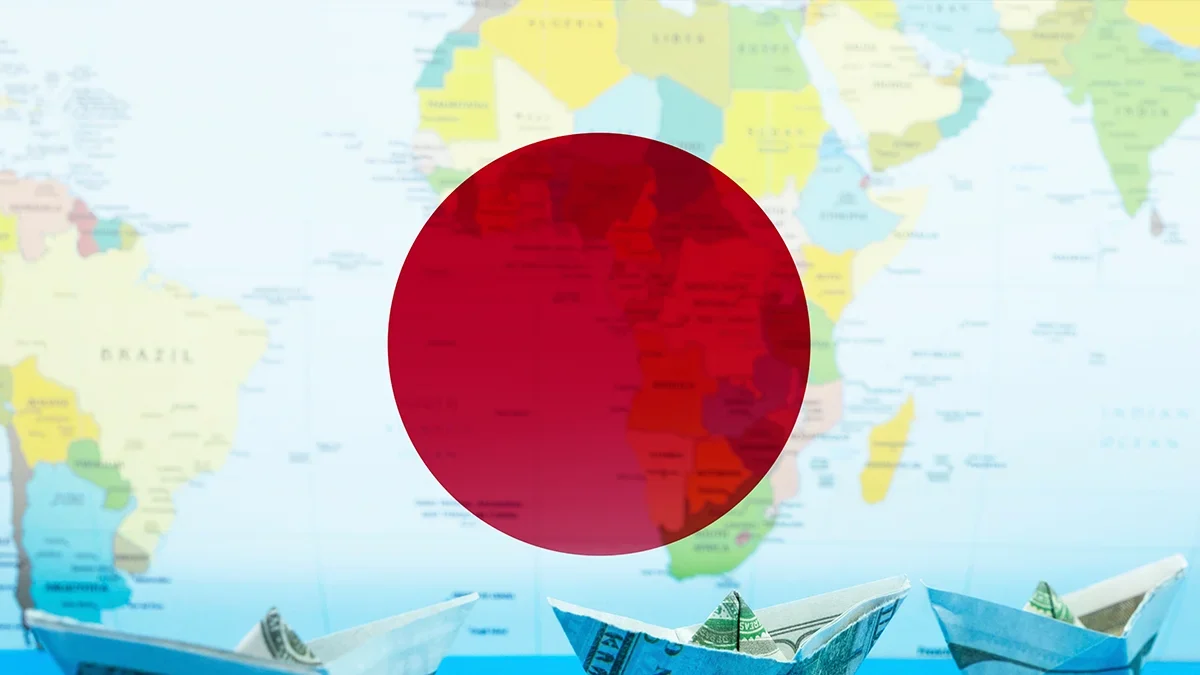• Experts at the Asian Insurance Forum 2023 discussed Hong Kong’s potential as a risk management hub.
• Ping An’s Jessica Tan highlighted how large language models and digital ledger technology can drive cross-border collaboration and enhance underwriting.
• Talent attraction and retention were seen as crucial for development, with proximity to China’s entrepreneurial talent pool seen as a particular advantage.
• Guy Carpenter’s Tony Gallagher sees opportunities in Insurance-linked Securities (ILS), but further investor education needed.
• Kevin Strain of Sun Life emphasised importance of supporting tech startups to enhance city’s ecosystem.
There may be plenty of opportunities for Hong Kong to strengthen its position as a risk management centre and drive insurance market growth by building on the city’s existing advantages, including its proximity to China, regulatory and tax incentives and access to capital markets, said experts at a panel at the Asian Insurance Forum (AIF) 2023 on Dec. 8.
A series of policy initiatives have already been launched to this effect. On July 1, Hong Kong’s Insurance Authority (IA) launched the first Unilateral Recognition insurance products – motor insurance products that provide cross-border coverage within the 11 cities of the Greater Bay Area (GBA). The IA is collaborating with industry and the government to explore the expansion of these offerings.
There are different barriers that have to be overcome, including improvements in infrastructure and data interoperability.
Jessica Tan, executive director, co-CEO and executive vice president at Ping An Group said during the panel that these products are an important step in building a stronger “ecosystem” of cross-border collaboration, but acknowledges improvements are needed.
By way of example, Tan shared her experience of motor travel with her family across Hong Kong, Macau and mainland China, highlighting that “lots of infrastructure needs to be worked out” and citing the inconvenience of dealing with multiple payment platforms.
Technology is the answer, said Tan.
“Insurance is only one aspect of the ecosystem, right? I can use technology to interface between these services. And that’s one of the things we’re trying to do, besides offering cross-border contracts.”
Another barrier to more cross-border products is the ability to effectively underwrite risks. One issue is unstructured data resulting from the different approaches to data collection across 11 distinct cities. A large language model (LLM) could help address this and it would be a key step to “having the transparency to better understand and therefore underwrite the risk.”
Tan also talked about the potential digital ledger technology (DLT) to provide more transparency and detail on insurance contracts, particularly for B2B transactions.
She gave the example of an end-to-end environmental monitoring platform that Ping An built to provide transparency on individual culprits and the type of pollutants they’re releasing into the air, water and soil.
“We can go right down, so it’s a much more efficient way of distributing risks… “I think that could perhaps be a new way and a new business model for insurance.”
Talent pool
Another advantage Hong Kong has is access to mainland China’s vast talent pool. Tan said that entrepreneurial spirit “is a little bit lacking” in many established cities like Hong Kong and Singapore.
“But in (mainland) China, there’s a kind of can-do attitude, the ability to take risks and say ‘okay, let’s try that out’.”
Fellow panellist Tony Gallagher, regional chief executive officer for reinsurance broker Guy Carpenter, agreed. However, he emphasised the importance of Hong Kong positioning itself to attract talent.
“We’ve just got through COVID. It takes a while to rebuild that hub. Talent mobility is something which has changed over the last two or three years.”
He said Hong Kong’s foundations are strong. It‘s an attractive place to build a business, headquarters two large regional reinsurance companies, and has the presence of many key general and life insurers.
“To me, it’s building on that to bring in international ideas and international and international people,” he added.
Tan said, “This year there are some policies which make it easier for talent to work [in Hong Kong] and I think much can be done to take advantage of that.”
ILS opportunity
In recent years, Hong Kong has announced a series of roadmaps and incentive policies to support the development of the insurance industry, including through the use of insurance-linked securities (ILS), which allow insurers and reinsurers to seek alternative capital by offloading insured risks to the capital markets through securitisation, for example through catastrophe bonds (cat bonds).
Gallagher sees this as another area which Hong Kong can use to strengthen its presence.
He says the foundation has been laid. The IA has developed a framework for ILS in consultation with the industry. Hong Kong has a huge number of investors and risks are now being brought to Hong Kong, for example, by the World Bank.
“Now you start to create an ecosystem around ILS, where you have services and capital, and you have risk being transferred in Hong Kong. So, you start to create an area where you have a viable business.
As the industry builds around it, so does the viability of the ILS as a centre. And once you build something like an ILS centre, of course, you can build other things on the back of that in the world of reinsurance,” Gallagher said.
With the foundations laid, questions remain on why more cat bonds haven’t been issued. In August, (Re)in Asia spoke to the market about what was holding back ILS capital allocation, in Asia and not just Hong Kong, and concerns about properly modelling flood risk were identified as one of the key barriers.
But the panel at the Asian Insurance Forum also sees another area of opportunity: investor education.
“We always hear Hong Kong investors, they need high risk, high return. They say ‘Don’t bring your triple-A securities here’,” said Michael Bennet, head of derivatives & structured finance, capital markets, treasury at the World Bank.
“Cat bonds, ILS offer that – with enough to tantalise even a Hong Kong investor, but we haven’t seen yet the development of the investor base,” he added.
Moderator Bernard Charnwut Chan, Chairman of Asia Insurance Company, half-joked: “Maybe we need to rebrand nat cat bonds. ‘High-risk, high-return bonds’, not just ILS.”
Supporting startups
Kevin Strain, president and chief executive officer of Sun Life sees another huge opportunity – fostering tech development in Hong Kong.
“You know around the world we see ecosystems. Singapore is actually doing a very good job of this, where they’ve created universities and companies interacting together” Strain said.
“I think that’s a place that Hong Kong… needs to find ways to help incubate that.”
Strain added that Silicon Valley has a very mature system for getting capital to fund startups and other interesting companies that help Sunlife on its journey of “helping our clients.” But having spoken to startups in Hong Kong, they often talk about how hard it is to get capital in the city.
“So I think that concept of finding ways to help startups in the insurtech and fintech health industries would be really valuable.”






















